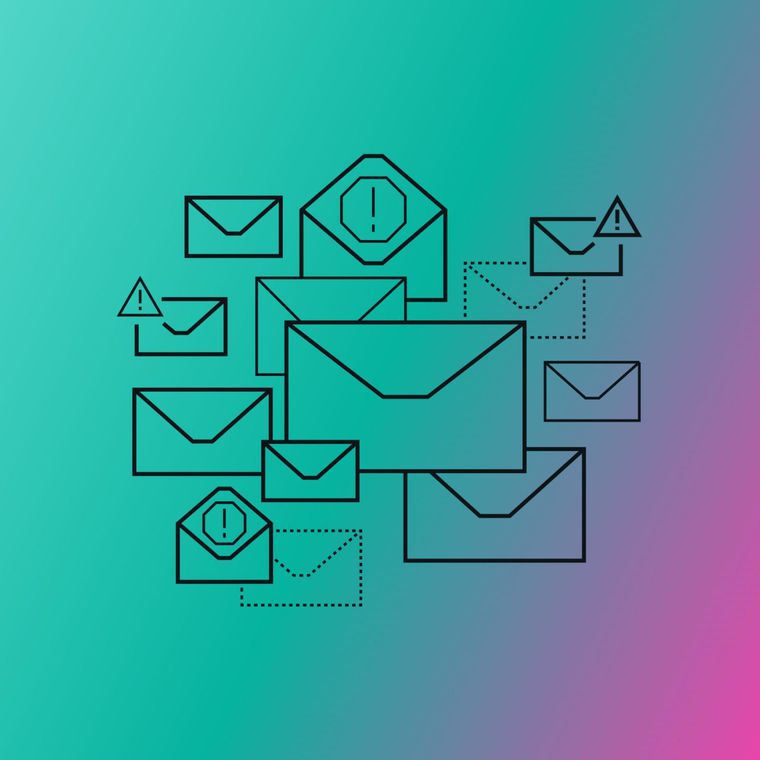Phishing attacks are hard to spot, but some signs include suspicious sender information, slight misspellings, or Punycode in URLs. Look for generic greetings, poor grammar, and urgent requests for sensitive information. Hover over links to verify destinations, and be cautious with unexpected attachments.
Your Guide to Email Security: Threats, Options, and Best Practices
Email security is a set of processes and technologies to protect email accounts, users, and organizations from unauthorized and malicious messages.
Email security is an organization’s front-line defense against email threats, a primary entry point for cyberattacks.
The shift to remote and hybrid work has heightened the need for implementing best practices for email security, as decentralized environments create more opportunities for increasingly sophisticated cybercriminals.
What Is Email Security?
Email security is a collection of processes and technologies that protect email accounts, users, and organizations from unauthorized access and malicious messages.
A robust email security program has two main components:
Processes: Policies such as security awareness training, access management, information archiving, and password standards.
Technologies: Solutions that enforce those policies, including secure email gateways, built-in provider protection, integrated cloud email security, and email data safeguards.
Effective email security programs combine processes and technologies with email security best practices to prevent threats from reaching users’ inboxes.
What Are the Benefits of Email Security?
Effective email security helps organizations defend against a growing range of cyber threats.
Here are some of the immediate benefits of email security in an organization:
Protects the organization’s brand, reputation, and bottom line from costly cyber disruptions.
Prevents operational downtime caused by evolving and sophisticated email threats.
Empowers security teams with faster response and proactive threat management.
Ensures compliance with regulations like GDPR, avoiding costly fines and legal issues.
Supports business continuity by investing in modern, adaptive email security solutions.
4 Types of Email Security Threats
Several email-based threats regularly target enterprises and small businesses alike.
Below are four of the most dangerous and costly modern email attacks:
Business Email Compromise (BEC): Attackers impersonate executives, vendors, or employees to divert payments or steal data.
Phishing: Fraudulent phishing emails trick recipients into revealing credentials, paying fake invoices, or installing malware.
Ransomware: A type of extortion malware that seizes and blocks access to an organization’s systems and data. Criminals will demand a fee to remove the ransomware.
Supply Chain Attacks: An impersonation attack where criminals impersonate or seize the account of a company’s trusted partner or vendor. They use the compromised account to dupe victims into paying fake invoices.
What Are Email Security Service Options?
There are currently three primary email security solutions on the market today:
Secure Email Gateway (SEG): Secure email gateways analyze incoming messages for known malicious signals. They are effective against spam but less effective against targeted, link-free social engineering emails.
Built-In Email Provider Protection: Email providers like Google and Microsoft include native email security. While these solutions do a great job on spam and wide-net attacks, they miss sophisticated attacks like spear phishing and BEC.
Cloud-Based Email Security: API-enabled email security solutions integrating directly with cloud email (ICES) are relatively new players. These products fill the gap of attacks missed by SEGs and built-in email provider security. They look beyond known email red flags, using behavioral analysis and contextual clues to spot suspicious emails.
The Current Problem With Email Security
Most organizations rely on gateways and native filters, but targeted social engineering emails contain no obvious red flags. Attackers research victims, spoof trusted senders, and send plain-text requests that slide past rule-based scanners.
For example, a rule-based scanner would have no problems with the email below since there are no clear indicators of compromise:

Here’s a real example of a modern social engineering email attack that bypasses a SEG. It has no known red flags, but it actually comes from a compromised vendor account in their supply chain. This attack successfully scammed the victim out of $753,000.
How to Keep Your Email Secure: Best Practices and Policies
Effective email security best practices combine policy, technology, and culture.
Strong Password Requirements: Enforce complex, regularly updated passwords to stop credential stuffing and brute force attacks.
Multi-Factor Authentication (MFA): Require multi-step logins for all accounts to curb takeover attempts.
Caution with Links and Attachments: Treat unexpected files or URLs with suspicion, even if the sender appears legitimate.
Off-Board Employees Promptly: Remove accounts and reclaim devices when staff depart to prevent unauthorized access.
Advanced Spam Filtering: Deploy an email spam filter to cut noise and reduce distraction.
Security Awareness Culture: Provide mandatory training that teaches employees how to spot phishing and BEC red flags.
Modern, Integrated Email Security: Supplement or replace legacy gateways with cloud-native solutions that use behavioral analysis and automatic remediation.
Domain and Header Authentication: Implement SPF, DKIM, and DMARC to verify sender legitimacy.
An Abnormal Approach to Email Security
Even with email security technology in place, your employees may still find phishing scams and social engineering email attacks in their inboxes. You need a layer of email security that can block the modern email attacks that slip by traditional security measures.
Abnormal uses behavioral analysis and contextual language clues to spot malicious emails. We can highlight unusual financial requests, manufactured urgency, and suspicious login behavior from senders–all common signs of a phishing attack that traditional email may miss.
That’s in addition to standard email security practices like scanning attachments and URLs and verifying sender reputation. Our cloud email security seamlessly integrates with your email provider to effectively replace your SEG.
Watch a demo to learn how Abnormal can modernize your email security.
Frequently Asked Questions (FAQs)
Get the Latest Email Security Insights
Subscribe to our newsletter to receive updates on the latest attacks and new trends in the email threat landscape.



